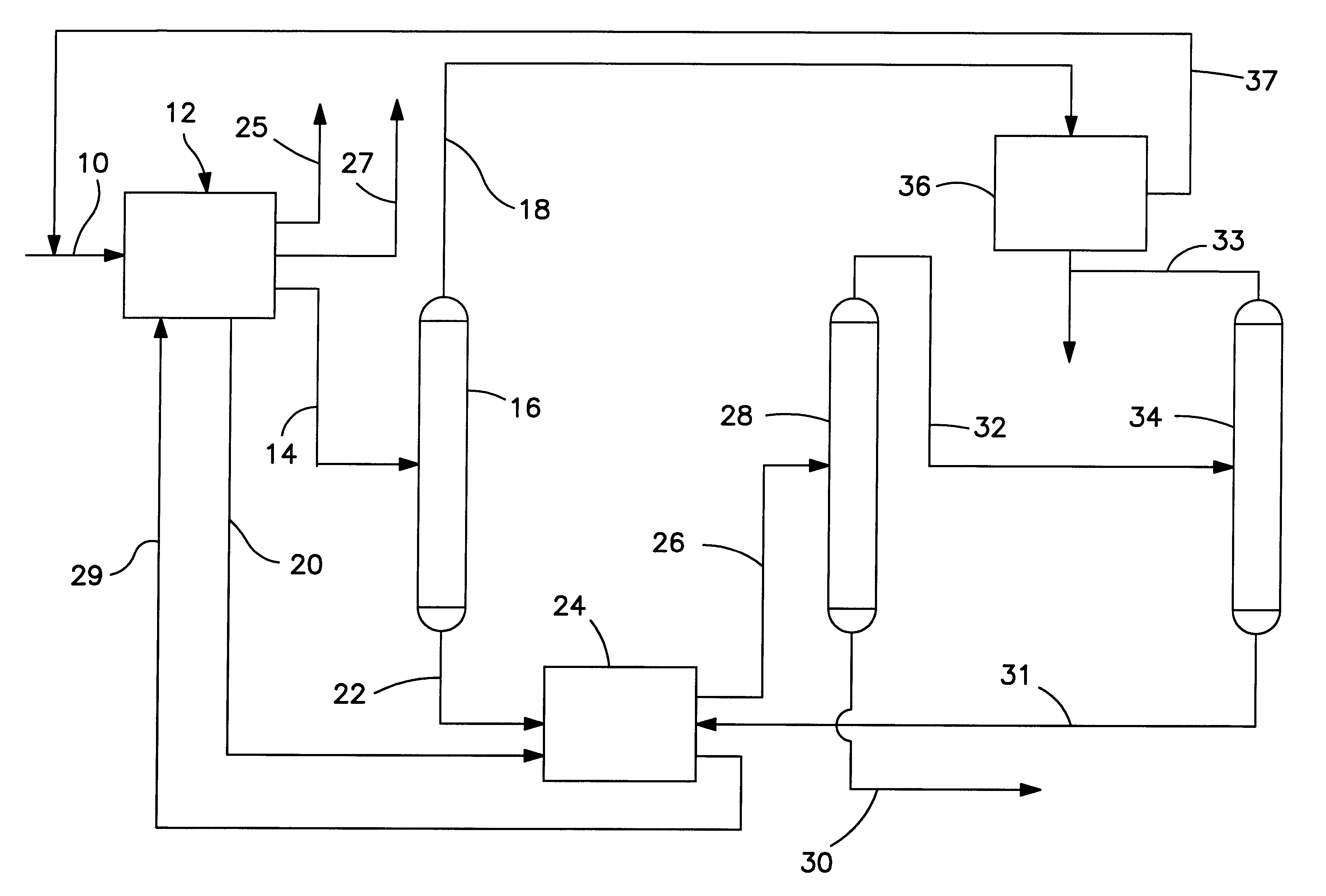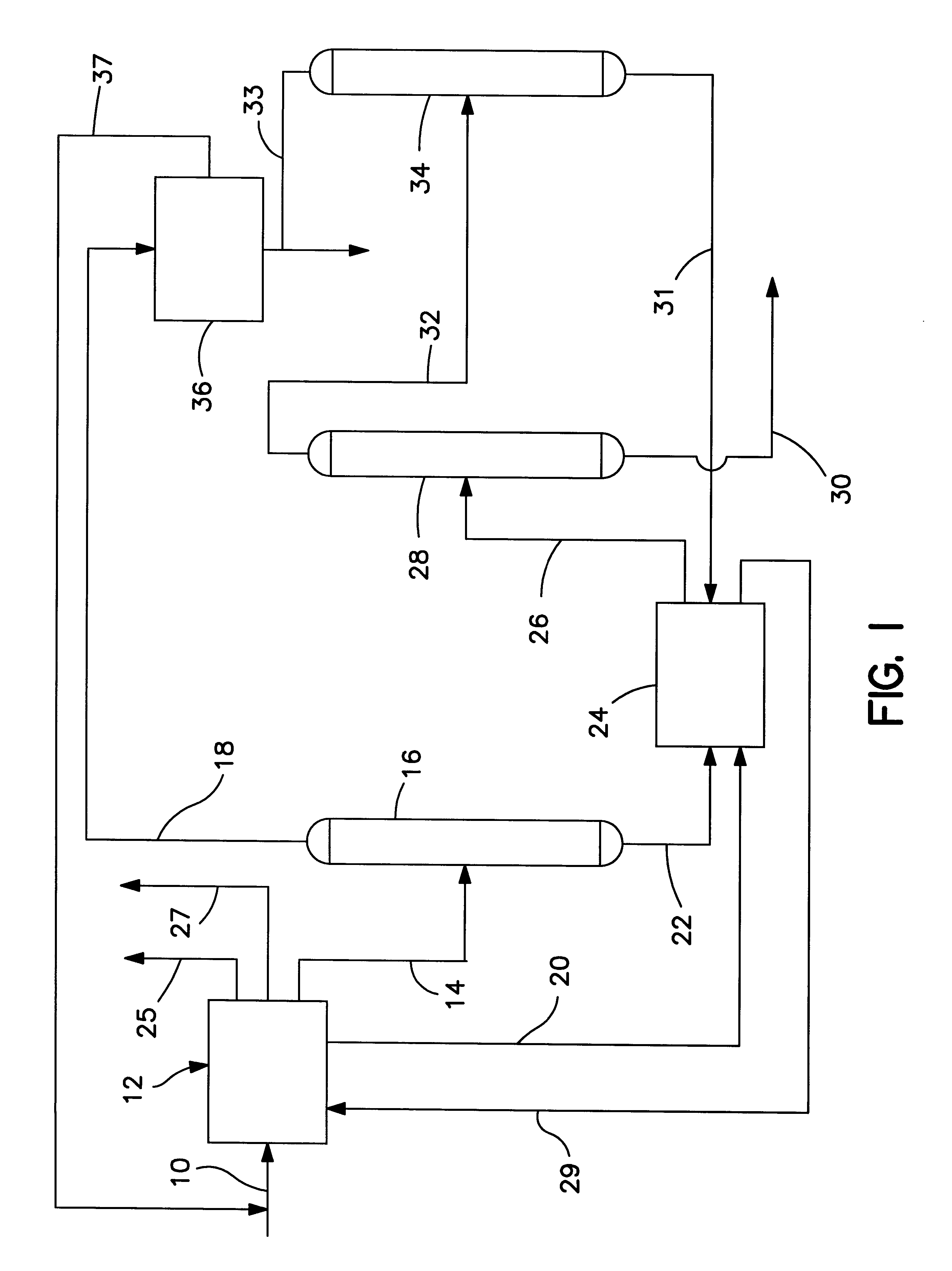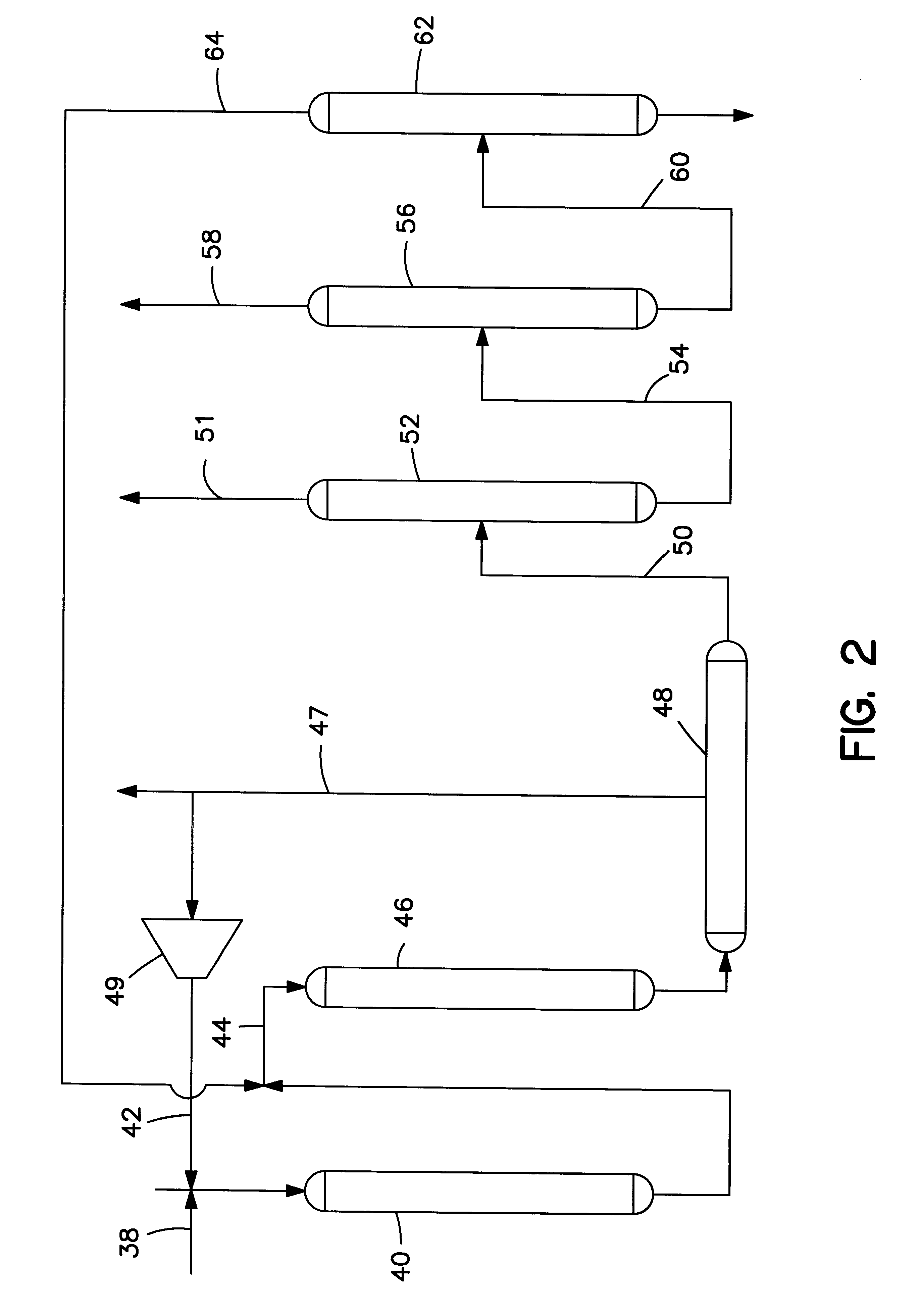Manufacture of high purity benzene and para-rich xylenes by combining aromatization and selective disproportionation of impure toluene
a technology of benzene and para-rich xylene, which is applied in the direction of naphtha reforming, chemistry apparatus and processes, organic chemistry, etc., can solve the problems of reducing the purity of the products, reducing the yield of benzene and xylene, and adding significantly to the cost of the final benzene and xylene products, so as to reduce the acidity, promote cracking, and reduce the selectivity of aromatics
- Summary
- Abstract
- Description
- Claims
- Application Information
AI Technical Summary
Benefits of technology
Problems solved by technology
Method used
Image
Examples
example 2
Aromatization Followed by Selectivated Para-Xylene Production
A C.sub.6 -C.sub.7 naphtha was aromatized over a non-acidic platinum L-zeolite catalyst by being fed via line 10 (refer to FIG. 1) to an aromatization unit 12. The aromatization was run to maximize yield of benzene whereby the resulting liquid product contained only a small amount of unreacted C.sub.7+ naphtha components. The C.sub.6+ product stream was collected. It was then taken, as represented by line 14 and was separated in a distillation column 16 into a benzene-rich fraction (removed as represented by line 18) and a C.sub.7+ bottoms fraction, both having close-boiling nonaromatics. Most of the unreacted paraffins, olefins and naphthenes were found in the benzene overhead fraction rather than the toluene and heavy aromatics C.sub.7+ fraction after distillation. As a result the feed (bottoms fraction) to the toluene disproportionation step which followed contained about 0.4 wt % close boiling non-aromatics. The benzen...
example 3
Process Starting with C.sub.7 Naphtha
A C.sub.7 naphtha is fed via line 38 (see FIG. 2) to an aromatization reactor 40 along with hydrogen gas which may be fed via line 42. The aromatics and close-boiling non-aromatics contained in the product from the reactor are fed via line 44 to a disproportionation zone 46 containing an acidic intermediate pore size zeolite catalyst which has been selectivated for para-xylene production. Hydrogen is separated from the product of the disproportionation zone 46 in flash drum 48 and removed via line 47. All or a portion of the hydrogen can be recycled, for example, via compressor 49, to the aromatization reactor 40 via line 42. The remainder of the product is fed via line 50 to a stabilizer column 52 wherein light hydrocarbons are stripped off and removed via line 51. The bottoms fraction from the stabilizer column is fed via line 54 to a benzene recovery column 56 wherein an overhead fraction of chemically pure benzene is removed via line 58. The ...
example 4
Process Starting with C.sub.5 -C.sub.11 Naphtha
FIG. 3 illustrates this example which is similar to the embodiment of FIG. 1. A C.sub.5 -C.sub.11 full boiling range naphtha is fed to aromatization unit 12 via line 10. Hydrogen and light hydrocarbons are removed via lines 25 and 27. The remainder of the aromatization product is fed via line 14 to distillation column 16. The overhead from column 16 contains benzene and lighter components. It is fed to benzene extractor 36. The raffinate from extractor 36 is cycled to the aromatization unit 12 via line 37. A chemically pure benzene product is removed via line 57.
The bottoms fraction from column 16 is delivered via line 22 to a distillation column 60. C.sub.9+ is removed from column 60 via line 62 and can be used as a heavy gasoline blending stock. The C.sub.6 -C.sub.8 overhead from column 60 is led via line 64 to a further distillation column 66.
Distillation column 66 separates the C.sub.6 -C.sub.8 overhead from column 60 into a C.sub.8...
PUM
| Property | Measurement | Unit |
|---|---|---|
| pressure | aaaaa | aaaaa |
| temperature | aaaaa | aaaaa |
| temperature | aaaaa | aaaaa |
Abstract
Description
Claims
Application Information
 Login to View More
Login to View More - R&D
- Intellectual Property
- Life Sciences
- Materials
- Tech Scout
- Unparalleled Data Quality
- Higher Quality Content
- 60% Fewer Hallucinations
Browse by: Latest US Patents, China's latest patents, Technical Efficacy Thesaurus, Application Domain, Technology Topic, Popular Technical Reports.
© 2025 PatSnap. All rights reserved.Legal|Privacy policy|Modern Slavery Act Transparency Statement|Sitemap|About US| Contact US: help@patsnap.com



